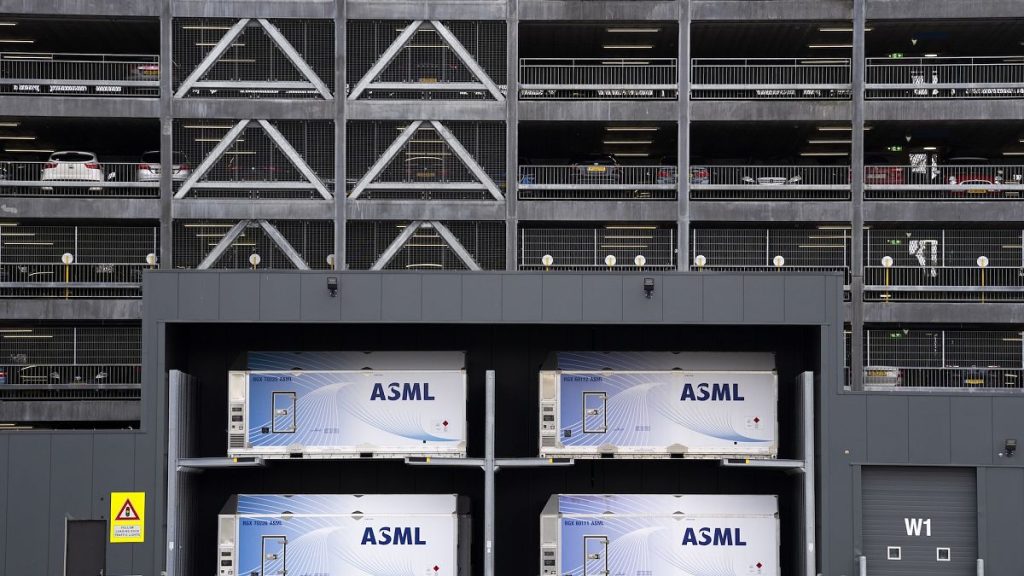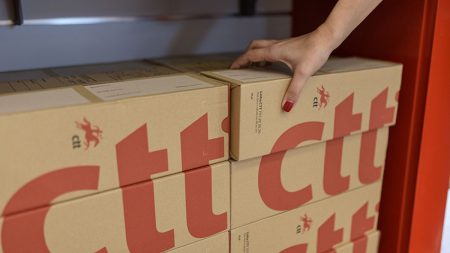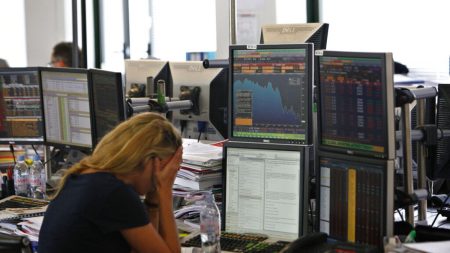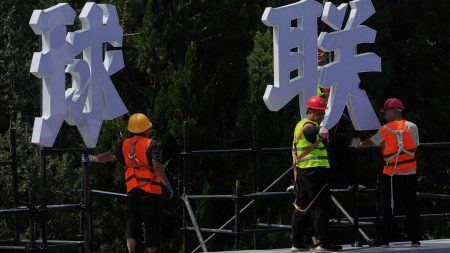ASML’s Projected Growth Trajectory: Navigating Short-Term Headwinds, Embracing Long-Term Opportunities
ASML, a leading global supplier of lithography systems for the semiconductor industry, has faced a challenging 2024 marked by sluggish semiconductor demand and geopolitical uncertainties. This turbulence is reflected in its stagnant share price performance, contrasting sharply with the broader technology sector’s positive growth. The company’s recent third-quarter earnings disappointment even led to the loss of its title as Europe’s largest tech company. However, despite these short-term setbacks, ASML anticipates a significant acceleration in its sales growth in 2025, fueled by an expected resurgence in semiconductor spending and the company’s dominant market position.
While ASML revised its 2025 growth forecast downwards due to a slower-than-anticipated recovery in the semiconductor industry, the adjusted projections still point towards a substantial growth trajectory. The company anticipates revenues between €30 billion and €35 billion in 2025, representing a potential growth of 7% to 25%. This anticipated growth is predicated on several factors, including continued bookings from major chip manufacturers and a projected increase in overall semiconductor equipment spending. Despite the current industry slowdown, ASML maintains a strong order backlog and continues to benefit from its unique position as the sole provider of EUV lithography technology, essential for producing the most advanced chips. This technological advantage provides a solid foundation for future growth.
The downward revision in ASML’s guidance also presents the possibility of positive earnings surprises in 2025. While the company acknowledges the current softness in demand, it remains optimistic about the long-term outlook. CEO Christophe Fouquet’s bullish outlook for 2030, with projected revenues between €44 billion and €60 billion and significantly higher gross margins, underscores the company’s confidence in its future growth potential. This optimistic long-term view is supported by anticipated growth drivers such as the increasing adoption of advanced semiconductor technologies, the expansion of AI applications, and the growing demand for high-performance computing.
ASML’s dominance in the EUV lithography market, where it holds a near-monopoly, is a key factor driving its long-term growth prospects. This technology is crucial for manufacturing the next generation of chips, and ASML’s unique expertise positions it to capitalize on the increasing demand for these advanced components. The company’s customer base includes industry giants like TSMC, Samsung, and Intel, further solidifying its market leadership. These partnerships ensure a steady stream of orders and contribute to ASML’s sustained growth trajectory.
The semiconductor industry, after experiencing a downturn in 2022 and 2023, is expected to witness an accelerated recovery in 2025, with industry analysts projecting a 7% increase in semiconductor equipment sales. This positive trend is expected to continue into 2026, further supporting ASML’s growth prospects. The increasing demand for AI applications, the rollout of 5G networks, and the growth of the Internet of Things (IoT) are key factors driving this anticipated rebound in semiconductor spending.
Geopolitical tensions, particularly the ongoing trade disputes between the US and China, present a potential challenge to ASML’s growth trajectory. However, the company has demonstrated resilience in navigating these complex geopolitical dynamics. Despite new US export restrictions on chips to China, ASML has been largely exempted from these measures, minimizing their direct impact on the company’s business. ASML has strategically reduced its reliance on the Chinese market, mitigating potential risks associated with escalating trade tensions. This proactive approach has helped to stabilize its share price and maintain investor confidence.
In conclusion, ASML, despite experiencing short-term headwinds, is well-positioned for significant growth in the coming years. The company’s dominant position in the EUV lithography market, its strong customer base, and the anticipated recovery in the semiconductor industry are key drivers of its long-term growth potential. While geopolitical uncertainties remain a concern, ASML’s strategic adjustments and its exemption from key US export restrictions mitigate potential risks. The company’s optimistic long-term outlook, coupled with its robust technological advantage, suggests a promising future for ASML as a global leader in the semiconductor equipment industry. While its current valuation may appear high, the company’s long-term growth prospects warrant investor attention.














